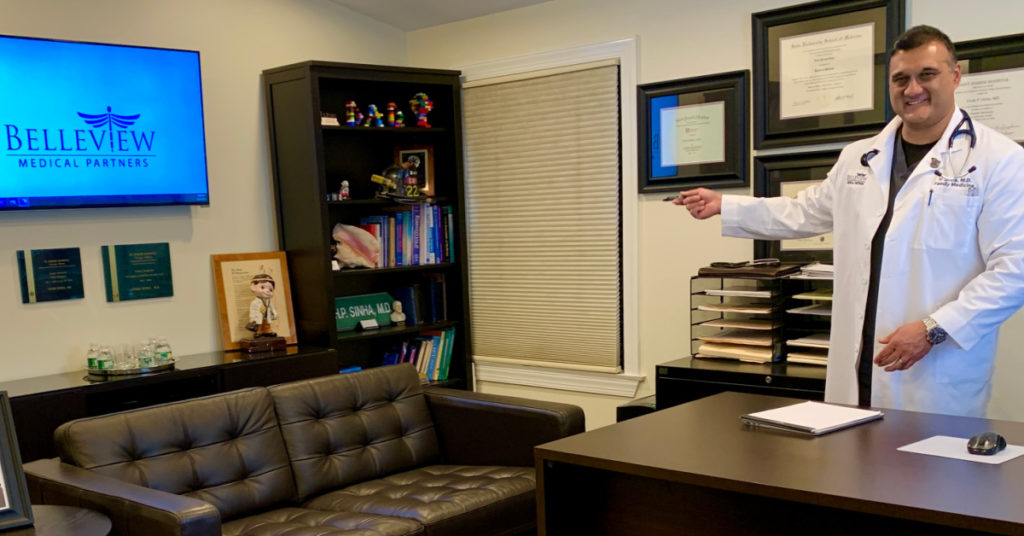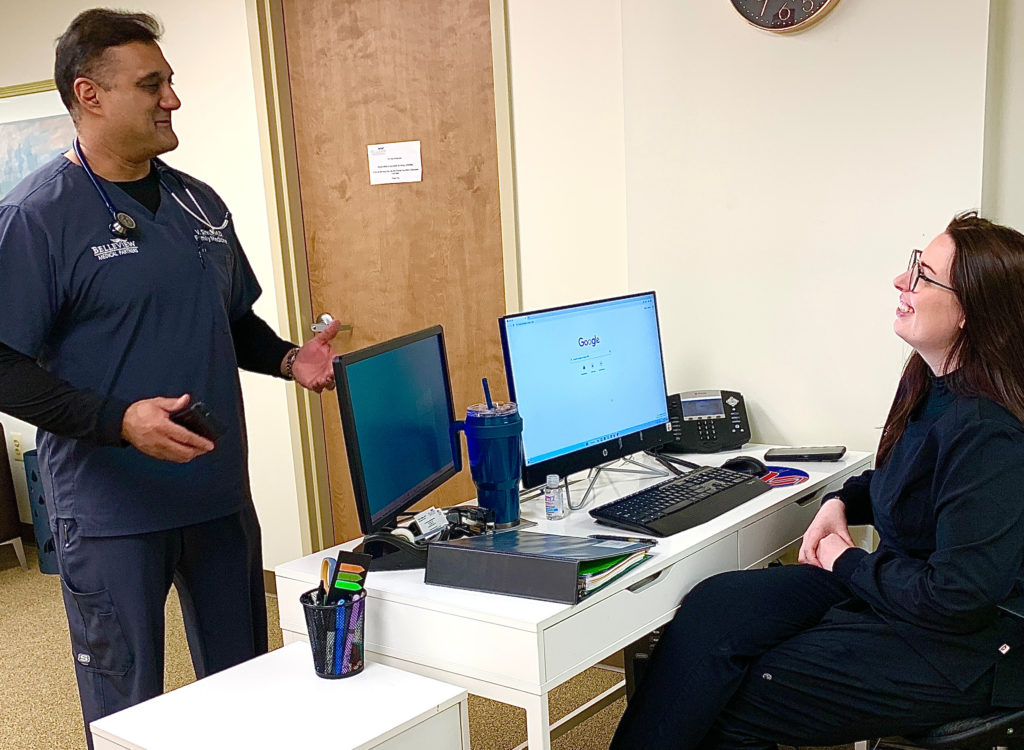Dr. Vivek Sinha Informs Public About Prevalent Winter Respiratory Illnesses
Local Concierge Medicine Physician shares valuable information to community

ALEXANDRIA, VA – On Jan.18, I sat down with Dr. Vivek Sinha of Belleview Medical Partners to discuss common illnesses on the rise in the community this winter. With the changes in temperature, people are not only more likely to be socializing in spaces that accommodate large crowds.
Dr. Sinha described his purpose and passion of teaching patients and giving them the most accurate medical information. Our interview follows in full.

Laura Plaia: What sort of illnesses are more common this time of year, and what are you seeing in your practice?
Dr. Sinha: Influenza season (aka flu season) runs typically in the fall and winter months so the rate of influenza is higher during this time. In addition, COVID is still very much prevalent as well as other viruses like rhinovirus, parainfluenza viruses and RSV. There are also bacterial infections, like certain types of Staphylococcus (staph) and Streptococcus (strep) that can cause pneumonia and sinus infections, as well as throat infections.
Recently scientists have found that a drop in temperature can affect the way our body fights off infection. Specifically, research is showing that when the weather drops to approximately 40 degrees fahrenheit, this causes the temperature in our nasal passages to drop enough that it decreases our ability to fight off infection. Bottom line is that we are definitely seeing an uptick in upper-respiratory tract and lower-respiratory tract infections in our practice.
LP: “When should someone seek medical advice or schedule a doctor’s visit?
VS: The specifics depend on the individual person and the severity of their particular illness. One of the first things that we have to determine is whether the infection is viral in nature or bacterial. Viral illnesses are extremely common and do not respond to antibiotics. The lifespan of most common viral infections are 2-7 days, so if someone has mild to moderate symptoms during this time frame, (such as runny nose, watery eyes, sinus headache, body aches or a cough), and they are NOT having severe symptoms like shortness of breath, very high fever or chest pain, then we would often advise to use over the counter cough and cold medications to help alleviate their symptoms and follow up if things are not improving or worsening.
However, if they are having severe symptoms like shortness of breath, chest pain, or a significant cough that is worsening, regardless of the time frame, we would recommend that they connect with their primary care physician and be examined.
I am often asked about antibiotics and, like all other medications, we should have a healthy respect for their benefits and side effects. It is often clinically difficult to differentiate between a viral infection and a bacterial infection, especially in the first few days so you will often see a “watchful waiting” approach. If I see someone on day 4 of their symptoms and they are stable and their exam is normal, I may advise them to use over-the-counter medications to ease their symptoms. However, if it is day 7 of their symptoms and their condition is worsening, we may decide to treat a potential bacterial infection which would require an antibiotic.
The bottom line is antibiotics are useful when used appropriately and can be potentially harmful if used inappropriately. It is important to look at the full spectrum of the patient and timeline/severity of the disease process when making a decision about treatment options.
ABOUT THE UNIQUE CONCEPT OF CONCIERGE MEDICINE
LP: “Dr, Sinha, explain how concierge medicine differs from traditional insurance-based medicine?”
VS: For traditional insurance-based medicine, patients utilize their medical insurance for all of their health care needs; anything from routine physical appointments to catastrophic hospitalizations. Speaking purely about primary care visits, medical insurance companies dictate how much physician practices are reimbursed for their services. This reimbursement depends on various factors including the diagnosis code, medical complexity, and length of visit. As a result, doctors offices have to see a certain number of patients every day in order to stay solvent. Since there are last minute cancellations, patient appointments are often double or even triple booked in order to not have empty slots. There have been multiple studies that have reviewed the average face to face time with a primary care physician, and while the numbers have some variations, the average time is anywhere from 15-20 minutes. The typical insurance-based primary care physician sees anywhere from 18-21(+) patients per day. This volume based approach can often lead to long wait times and short visit times.
The Concierge Medicine model shifts the way doctor’s offices are reimbursed.
At its most basic level, concierge medicine is a type of practice where the patient pays the physician directly for his or her services rather than utilizing their medical insurance. This allows a concierge practice to have a much lower patient base. Using our practice as an example, instead of seeing 18-21 patients a day, our practice sees 5-10 patients a day. That allows us to have 30-60 minute appointments where we can get to know our patients very well and address
There are different types of concierge practices but the model that we utilize is a once a month payment model that covers 100% of our services. Once a patient signs up with us, they have unlimited in-office visits, unlimited house calls, unlimited phone calls, and unlimited emails. We don’t charge a copay and other than the once a month fee, there are no other out of pocket fees that our patients pay.
In addition to improved patient satisfaction, there is improved physician satisfaction. Most people go into health care because they want to make a positive impact in people’s lives. Unfortunately the current system poses challenges that can often seem counterintuitive to a patient-centered approach. Concierge medicine shifts the focus back to the doctor-patient relationship.
LP: “Can patients use their traditional health insurance along with being a patient with your concierge practice?
VS: The only out of pocket expense that our patients pay is our monthly fee. That is a fixed cost that covers 100% of what we do. However, any prescription that we write, any lab test or imaging study we order, or any specialist we refer them to is covered by their insurance, just like any other doctor’s office.
{Editor’s Note: Stay tuned next month as I speak with Dr. Sinha as we take a closer look into ways we can find treatment and precautions we can take.}
[SEE ALSO: Local Surrealism Tattoo Artist Welcomes Miami Guest Artist to Studio February 18-25]




